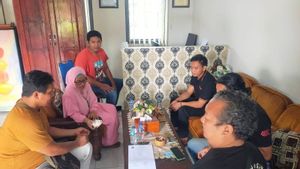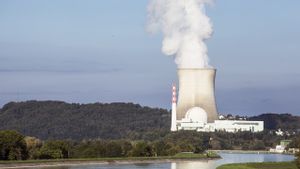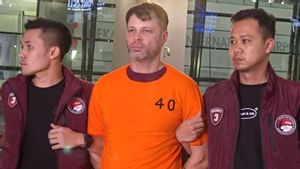LUWU UTARA - Slowly, the infrastructure in North Luwu Regency, which is falling apart, hit by flash floods, is starting to be repaired. The electrical conditions there began to go to the normal direction.
Ministry of Energy and Mineral Resources (ESDM) together with PT. PLN (Persero) confirmed that the electricity conditions in a number of North Luwu areas were gradually recovering. As of Friday, July 17 yesterday morning, 328 substations or 92 percent of the 355 substations affected have been successfully started.
"Efforts to accelerate electricity recovery in the affected areas are continuously being carried out, gradually reaching 100% amidst difficult road access and high waterlogging," said the Head of Communications Bureau, Public Information Services and Cooperation of the Ministry of Energy and Mineral Resources, Agung Pribadi.
"Friends of PLN in the field are working hard, so that the people of North Luwu can immediately get electricity," continued Agung in a press release received by the editor.
PLN deployed dozens of officers from PLN UP3 Palopo, ULP Tomoni and ULP Masamba to carry out inspection, cleaning, drying and checking of substations.
Some areas that have recovered 100% are Malangke, Kanyapu, Pongo, Lara, Lawewe and Mappadecceng. For Masamba, Radda, Baebunta, Malimbu and Baloli, the electricity recovery process is 90%. Meanwhile, Kapidi, Poddo, Laba, Sabbang, Salulemo, the recovery process was 82%.
The flash floods that occurred last Monday (13/7) affected six sub-districts, namely Masamba, Sabbang, Baebunta, South Baebunta, Malangke and West Malangke Districts. A total of 3,627 families or 14,483 people were displaced in three sub-districts.
The condition of refugees in North Luwu
The BNPB Operations Control Center noted that as of Friday at 17.30 WITA, more than three thousand families fled after the flash flood in North Luwu Regency, South Sulawesi. They are located in three sub-districts, namely Sabbang, Baebunta and Masamba Districts.
The number of survivors reached 3,627 families or 14,483 people. This number does not include those who fled in the districts of South Baebunta, Malangke and West Malangke.
What do refugees need? BPBD identifies their urgent needs in the form of clean water, medicines, women's underwear, diapers for toddlers and the elderly, blankets, sarongs, household cleaning kits, family kits and masks.
Analysis of the LAPAN team based on Himawari-8 satellite imagery explained, there was rain with a long intensity on July 12, 2020 from around 22.00 WITA until the next day at 6.00 WITA. During the day, it rains again with a long intensity until the night when a flash flood occurs. Rainfall has a significant influence as a carrier of mud material and tree branches from the upstream area of the river.
In addition, the geomorphological and geological structure of North Luwu Regency shows that the upstream area of the Sabbang River, Radda River and Masamba River are very steep and rough hills. This condition is formed from faults due to tectonic processes in the past. [/ Read_more]
The English, Chinese, Japanese, Arabic, and French versions are automatically generated by the AI. So there may still be inaccuracies in translating, please always see Indonesian as our main language. (system supported by DigitalSiber.id)








